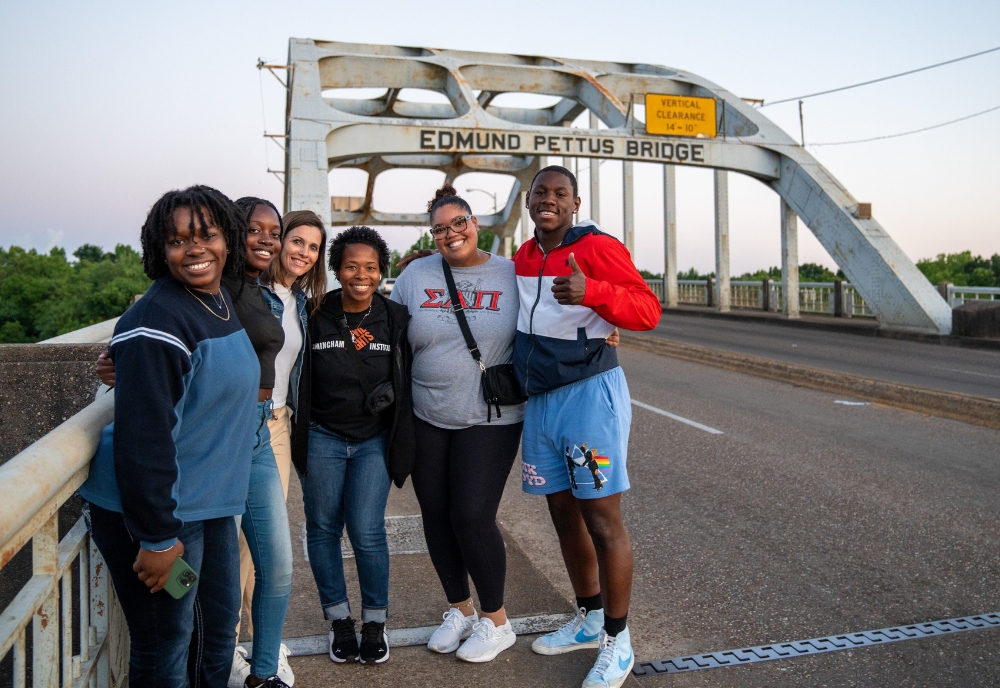An interdisciplinary group of USF students participated in a week-long immersive summer course designed to provide more insight on the Civil Rights Movement of the 1960s.
The students traveled across portions of the “Civil Rights Trail” in Alabama, which included visits to historical sites associated with the Civil Rights Movement in Birmingham, Montgomery and Selma.
The trail is a collection of churches, courthouses, schools, museums and other historical landmarks.
Students reflect on their experiences traveling along the Civil Rights Trail
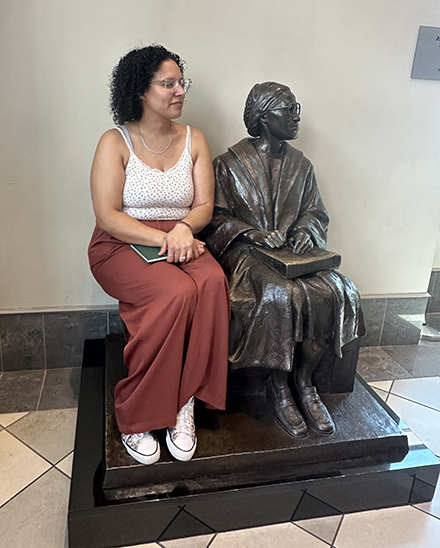
Evita Garcia poses beside a bronze statue of Rosa Parks.
Evita Garcia
Psychology
“This has been a life-changing experience. Every experience was an amazing and meaningful one. From talking to the locals in Selma, to bonding with the group during reflection and sharing our experiences and vulnerabilities. I felt the growth as an individual, as well as the growth of us together as a group, and I have forged bonds that I know will last a lifetime. This is an incredible way to learn and for it to become crystallized intelligence. I will never forget what I learned here. There is a saying that goes ‘A man never enters the same river twice, for he is not the same man, nor is the river.’ I am not the same woman that started this journey, but I am deeply grateful for this transformative experience. I hope this river continues to flow here for anyone willing to get their feet wet.”
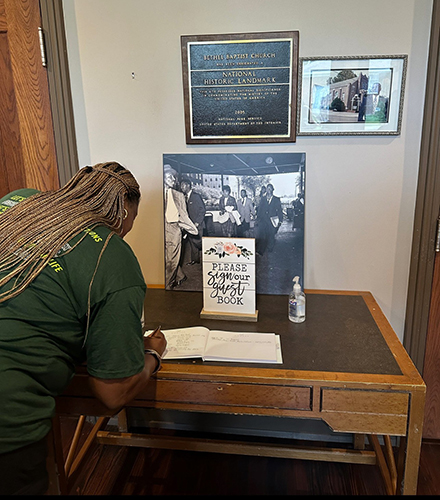
April Edwards signs Bethel Baptist Church guest book.
April Edwards
Social Work
“As a non-traditional student and future social worker, I had an incredibly eye-opening experience. This course not only allowed me to gain a deeper understanding of the various generational traumas experienced by individuals, including men, women and children of color, but also provided me with practical tools and strategies to address these traumas in my future work as a social worker. The insights I gained from this course have not only broadened my perspective, but have also instilled in me confidence in my ability to navigate the complex and demanding field of social work effectively. I believe this experience has better prepared me to comprehend the diverse range of challenges that my future clients may face.”
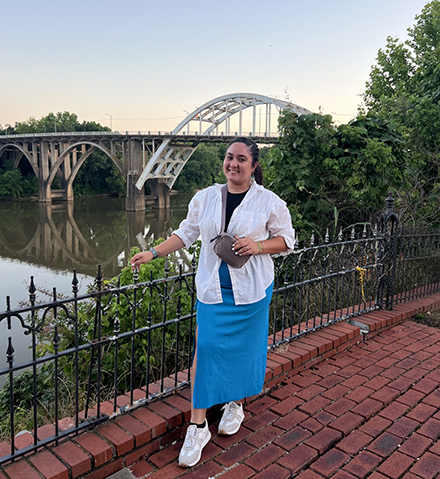
Ariadna Ruiz Islas stands at a fence in front of the Edmund Pettus Bridge.
Ariadna Ruiz Islas
Social Work
Minor: Psychology and Mass Communications
“I have come to the realization that experience (and immersion in this case) are the best ways to learn. This class gave me the opportunity to learn in the sites where history took place and by talking to people who lived through the history. This enhanced my student experience by teaching me so much more than a textbook ever could. Understanding what happened during that time period and how it still affects people today is going to be an invaluable skill that I have for my career. Seeing the signs at multiple museums that read ‘no n*****, no Mexicans, no Puerto Ricans, no dogs.’ As someone who is half Puerto Rican and half Mexican, these signs really hit me. I realized that although when we think of the Civil Rights Movement victims, we tend to only talk about Black people, but the reality is that discrimination during this time period affected all people of color. This really put into perspective for me that if I were to have been alive at that time, the horrific stories I learned and pictures that I saw, could have been me.”
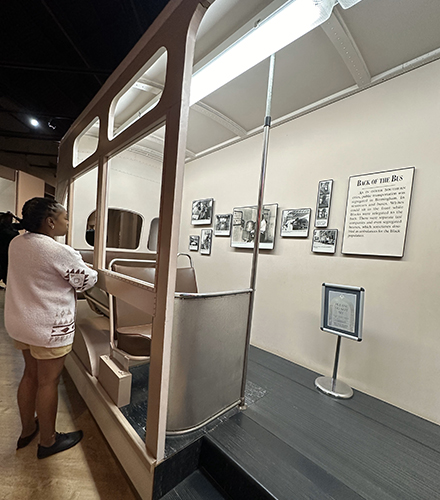
Nuavia Stewart examines a "Back of the Bus" exhibit.
Nuavia Stewart
Social Work
“This was far more than an academic pursuit; revisiting my journal entries through the eyes of a social worker, my heart swells with a mix of pride and profound sadness, capturing the emotional depth of our journey to confront the deep scars of racial injustice in our country. It served as a visceral call to action, deeply connecting me to the historic struggles that have shaped our nation. This experience has made the achievements and ongoing challenges of the civil rights movement incredibly personal, igniting a fierce commitment within me to persist in the fight for equality and justice. As I prepare to graduate this fall, I carry with me the spirit of the freedom riders, the weight of a shared history, and the hope for a future where such reflective journeys catalyze genuine societal transformation.”
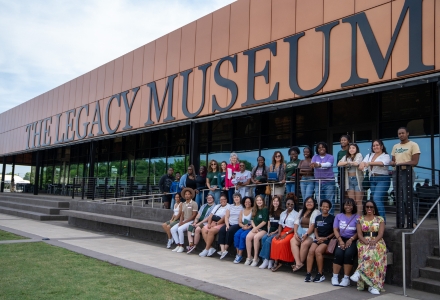
Students gathered outside The Legacy Museum.
Summer Garcia
Criminology
“The most impactful experience of the trip was the Legacy Museum. It does a beautiful job of combining art and interactive objects to portray the horrors of our past and present. The room dedicated to the victims of lynching brought me to tears. This was truly life-changing. It changed my perspective of the world around me and put historical events into extreme context. It gave me a better understanding of what I want to do in the future to inspire justice and change in our country.”
“The students were my favorite part of this trip,” said Dr. David Ponton, associate professor in the School of Interdisciplinary Studies. “They were bright, of course, because they're USF students, but they were also deeply passionate about the subject matter. They asked really good questions. They connected the history to their own lives. They walked into these sites with reverence. They expressed surprise to learn new things about figures like Dr. Martin Luther King and some of the conflicts he had with other leaders in the Civil Rights Movement. And they also expressed, very openly, the kind of emotional toll that the trip took on them and encouraged each other. I had no idea what to expect coming in and meeting them, but they were as fantastic as any group of USF students I've had the pleasure of meeting so far.”
